ANIMALS
Meet The Red-crested Cardinal, The Bird Has A Vibrant Red Head Pops From A Chest Of Pure White Rendering
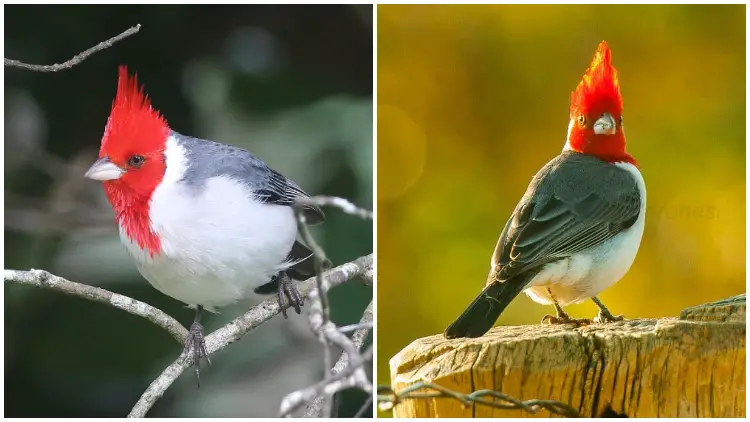
This bird catches attention throughout the year with its unmistakable features, such as a striking red crest that creates a stunning contrast against its white and grey feathers.
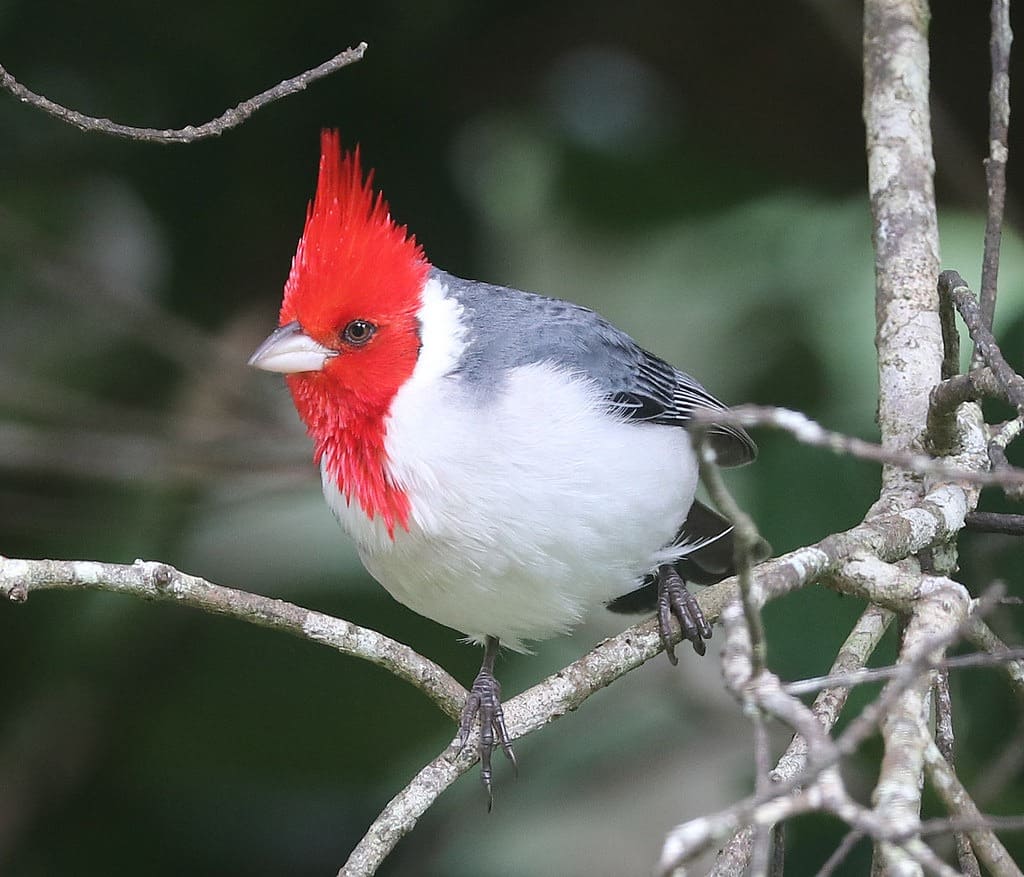 Image source: Sloalan
Image source: Sloalan
The red-crested cardinal, a captivating bird of medium size, shares a remarkable resemblance to its popular relative, the Northern Cardinal. However, despite their similar appearances, this songbird is actually related to tanagers, a colorful group of small birds.
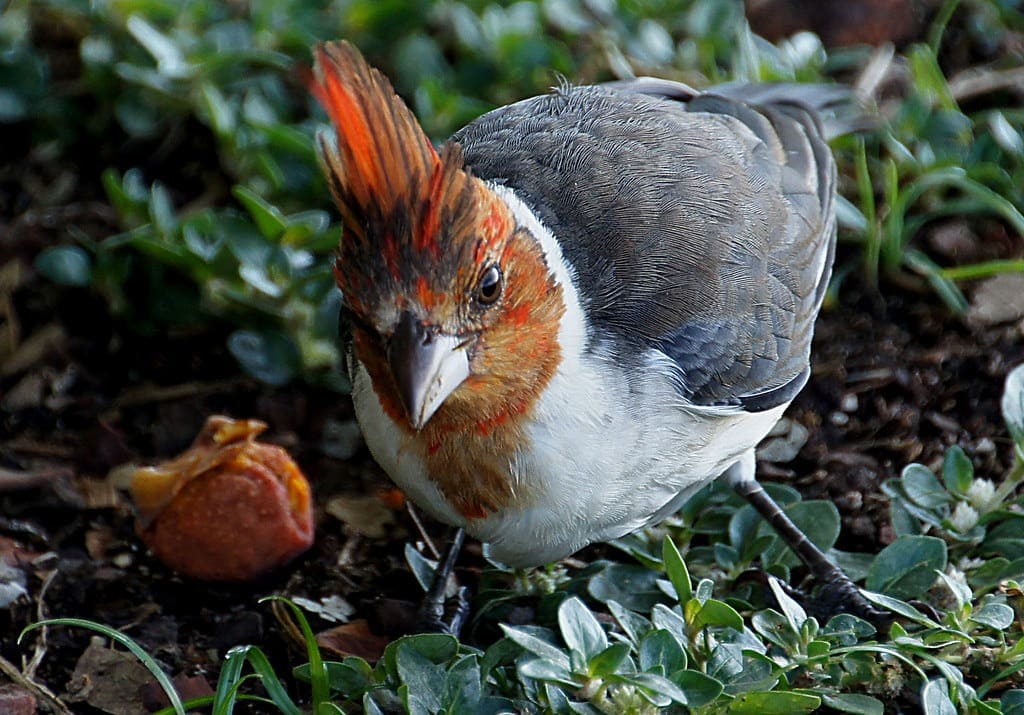 Image source: Bernard Spragg
Image source: Bernard Spragg
Distinguishing between male and female red-crested cardinals can be difficult as they have similar appearances. Both males and females sport a striking red crest and a pale silver bill. Their backs are covered in dark gray feathers, while their bellies are pure white.
To communicate with potential mates or express alarm, red-crested cardinals have the ability to raise or lower their crests. This behavior can also serve as a way to intimidate intruders and make themselves appear larger.
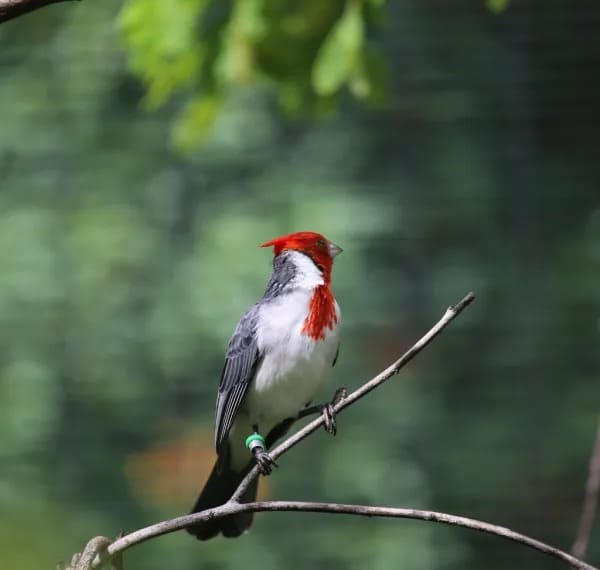 Image source: cuatrok77
Image source: cuatrok77
The red-crested cardinal is naturally found in various regions of South and Central America, including Uruguay, Paraguay, southern Brazil, Bolivia, and Argentina. However, it has also been introduced to Puerto Rico and Hawaii, where it has successfully established populations.
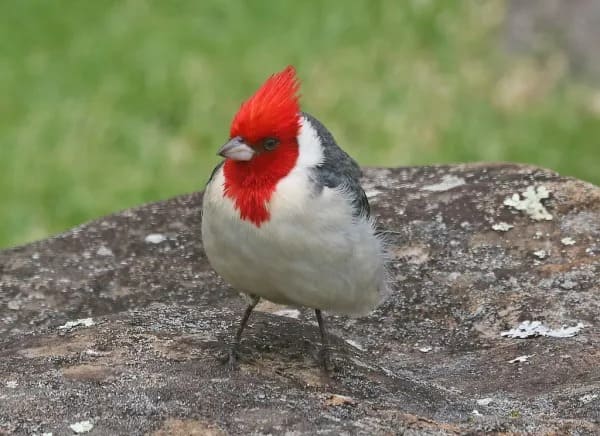 Image source: Sloalan
Image source: Sloalan
Thanks to its adaptability, this bird has flourished in diverse environments. It thrives in semi-open spaces that have trees, shrubs, and moist tropical regions. Additionally, it can be spotted in tropical savannas and even degraded forests. The red-crested cardinal has also managed to adapt to human-inhabited areas, including agricultural lands, suburban neighborhoods, and urban settings.
 Image source: cuatrok77
Image source: cuatrok77
Red-crested cardinals are birds that are active during the day, known as diurnal creatures. They usually reside in pairs or small family groups, but during periods when they are not breeding, they may gather in larger flocks. Male red-crested cardinals become territorial and can display aggressive behavior, chasing away intruders during the breeding season. When in flight, they have a distinctive undulating pattern, flapping their wings in short bursts as they ascend and then gliding with folded wings as they descend.
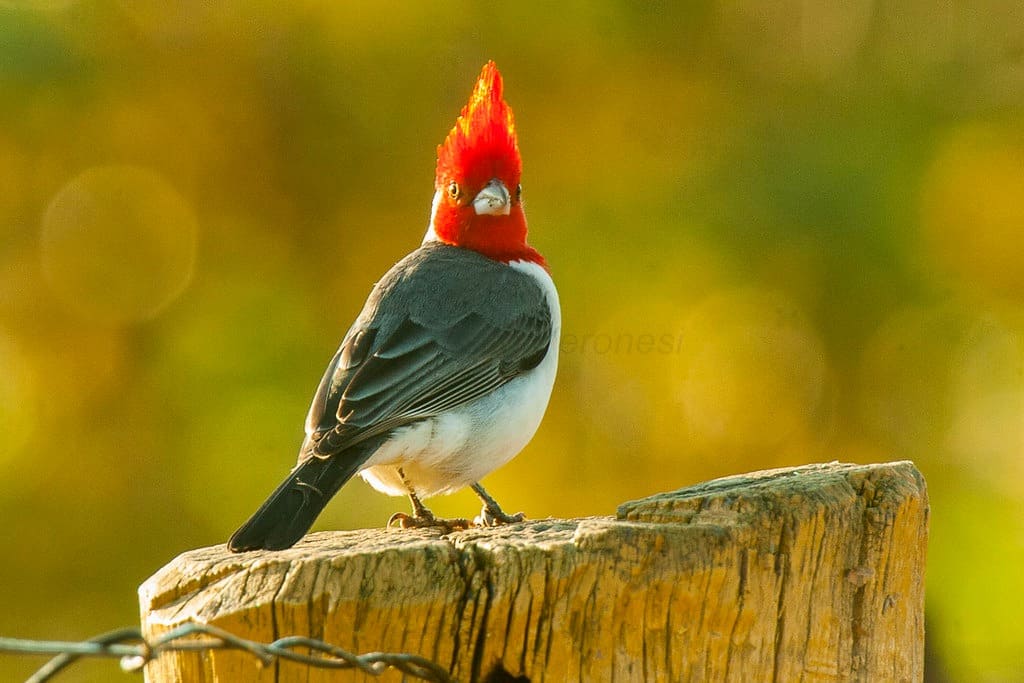 Image source: fveronesi1
Image source: fveronesi1
The red-crested cardinal has a charming and pleasant song, which comprises a range of whistles and chirps. Their vocalizations are often repetitive and can be heard throughout their territories. These enchanting melodies further contribute to the captivating allure of this bird.
 Image source: Sloalan
Image source: Sloalan
The red-crested cardinal has a versatile appetite, as it consumes both insects and a variety of fruits and seeds. It often searches for food by hopping and foraging on the ground. This bird’s adaptability extends to its feeding habits, as it readily explores the vicinity of seed bird feeders in its quest for nourishment.
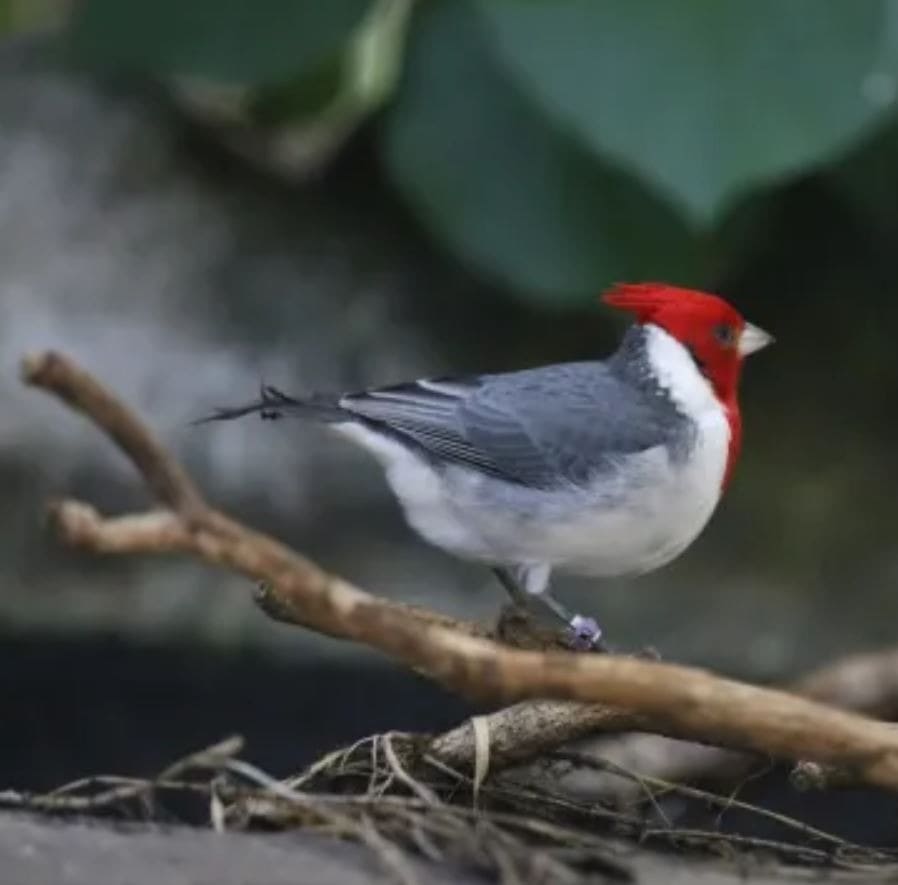 Image source: cuatrok77
Image source: cuatrok77
The breeding behaviors of the red-crested cardinal are captivating to witness. During the breeding season, they form faithful pairs. Even when kept in captivity, they can successfully reproduce. Males and females engage in vocalizations and sing duets to attract one another. They also showcase courtship displays by strutting, fanning their tails, and clicking their bills. Building the nest is a collaborative effort, with both parents using various plant materials to construct it in low shrubbery. The female lays 2 to 3 eggs, which have a greenish-white color with streaks of brown or mauve. Incubation is primarily done by the female and lasts around 12 days. Both parents take part in feeding the hatchlings. The chicks leave the nest after 2 to 3 weeks but may stay with their parents as part of a family group for up to a year until they find mates. In some instances, a second brood may be raised.
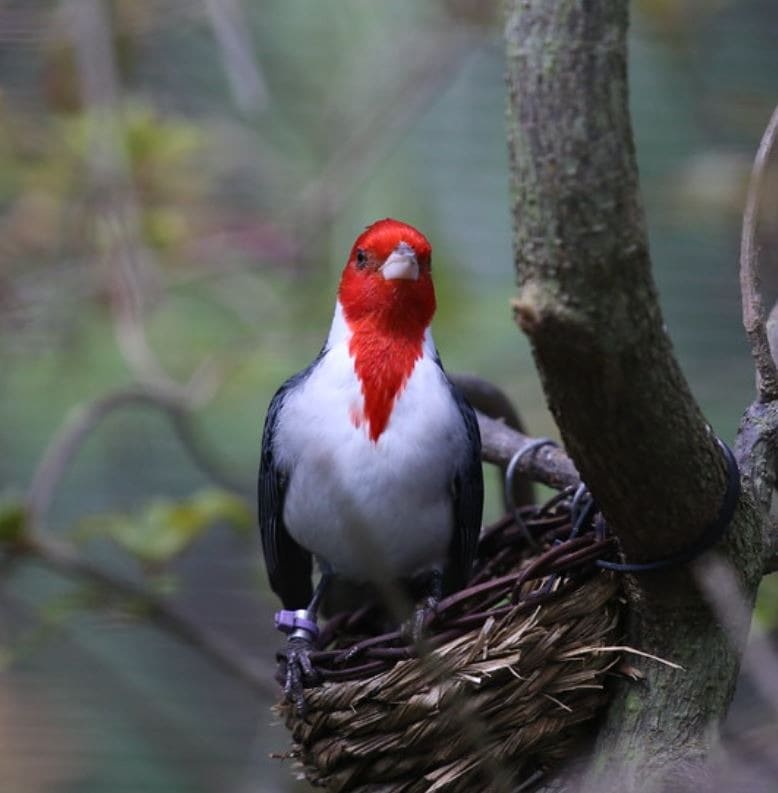 Image source: cuatrok77
Image source: cuatrok77
Unlike many birds that migrate over long distances, the red-crested cardinal does not engage in such extensive journeys. Instead, it prefers to stay in warm areas throughout the year, which could be the reason behind its settled and non-migratory nature.
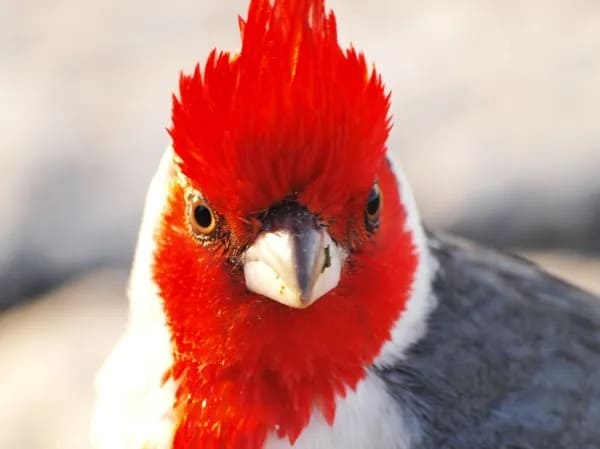 Image source: ~Shanth
Image source: ~Shanth
The red-crested cardinal is currently categorized as being of “least concern” in terms of conservation status. This means that its population is considered stable, primarily due to its wide distribution and ability to adapt to different environments. However, like many bird species, it still faces various challenges including habitat loss, illegal bird trade, and the effects of human encroachment on its natural habitat. These factors continue to pose potential threats to its long-term survival.
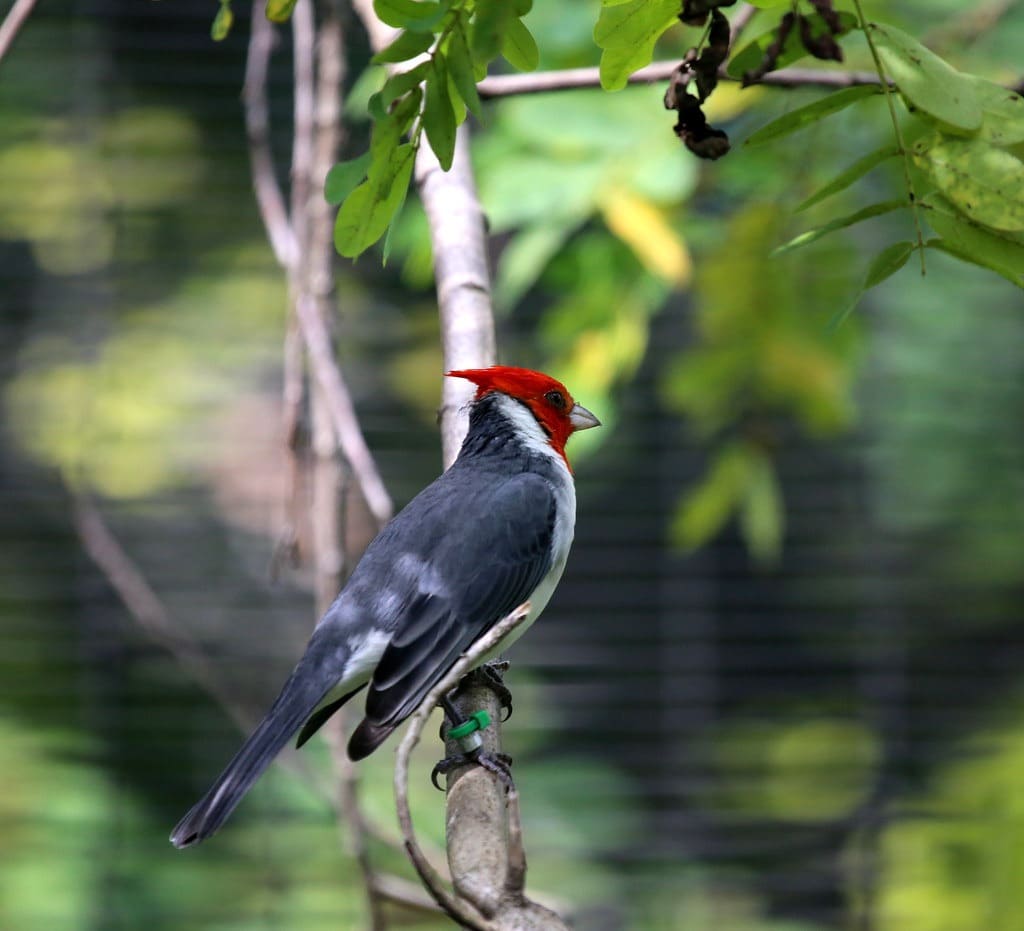 Image source: ~Shanth
Image source: ~Shanth
Watch the Video here:
ANIMALS
Amazing Video of Unseen Ocean Creatures in the Ningaloo Canyons

The Schmidt Ocean Institute recently explored the Ningaloo Canyons on the western coast of Australia using a robotic underwater vehicle called the ROV Sebastian. Check out the amazing video of what they discovered in the deep parts of the Indian Ocean.
More info: Youtube




ANIMALS
These Pics Are Art and the Artists Are Insects

Flying insects move so quickly that they are hard to follow, but new technology and some smart ideas have helped Spanish photographer Xavi Bou do just that. After spending 10 years focusing on birds in flight for his Ornithographies project, he turned his attention to insects.
For Entomographies, he uses high-speed video footage taken by Adrian Smith, an insect expert at North Carolina State University, to study and record how insects move. Bou then picks multiple frames and combines them into single images that show the fast movements of one or more insects through space and time.
With Smith’s help, Bou has captured the aerial tricks of wasps, the jumps of leafhoppers, and the fluttering of butterflies in amazing detail. He hopes that by doing this, he can make people more aware of the decline in important insect populations around the world.
1. Zebra longwing
This butterfly, which is common in many areas of the Americas, really fits its name. It can fly very high with just a few flaps of its large wings.
 Image source: nationalgeographic
Image source: nationalgeographic
2. Two-lined spittlebug
This insect, which comes from the eastern United States, is often seen as a pest because it likes to eat grass. Its springy back legs can make it jump into the air like a rocket.
 Image source: nationalgeographic
Image source: nationalgeographic
3. Yellow-collared scape moth
Unlike most moths, this North American species flies during the day. Its shiny blue-black wings sparkle in the sunlight.
 Image source: nationalgeographic
Image source: nationalgeographic
4. Ailanthus webworm moths
These tropical moths have spread farther north in the U.S. Because of their larval host, the invasive tree of heaven, they are now one of the most common backyard moths in the country.
 Image source: nationalgeographic
Image source: nationalgeographic
5. Common stonefly
Mostly found in eastern North America, this insect starts its life as an underwater nymph in forested streams or rivers. Then it leaves the water, sheds its skin, and becomes an adult with wings.
 Image source: nationalgeographic
Image source: nationalgeographic
6. Green lacewings
Eighty-seven species of this insect have been found in the U.S. and Canada. Since they eat a lot of unwanted plant pests like aphids and mites, they are often used to naturally control these pests.
 Image source: nationalgeographic
Image source: nationalgeographic
7. Grapevine beetle
This insect, fittingly named, eats the leaves and fruit of grapevines, both wild and farmed, but it doesn’t do much damage to the plants. As a type of scarab beetle, it often flies in a curved path.
 Image source: nationalgeographic
Image source: nationalgeographic
8. Oak treehopper and green treehopper
Treehoppers are known for their uniquely shaped pronotum, the part behind their head, which often looks like plant parts to hide from predators. They can jump well thanks to special muscles.
 Image source: nationalgeographic
Image source: nationalgeographic
9. Banded orange
This brightly colored butterfly can be found from Mexico to Brazil. Before mating season, male butterflies look for mineral salts, sometimes even drinking salty fluids from the skin, eyes, and nostrils of other animals.
 Image source: nationalgeographic
Image source: nationalgeographic
10. Sapho longwing
Longwings can live for 6 to 7 months, longer than most butterflies. This type, found from Mexico to Ecuador, has shiny blue wings, which is why it’s also called the Sapphire longwing.
 Image source: nationalgeographic
Image source: nationalgeographic
ANIMALS
Eagle and Fox in an Epic Midair Battle Over a Rabbit, Were Captured by a Photographer

Wildlife photography often depends on the perfect combination of good timing and the right place.
That’s exactly what happened when Kevin Ebi, an experienced wildlife photographer, captured an incredible battle between a bald eagle and a red fox, both competing for a rabbit meal.
In a detailed blog post, Ebi shares the fascinating series of events that unfolded while he was photographing foxes in San Juan Island National Historical Park, located in Washington state.
Ebi noticed a lively group of eight fox kits as they began their hunting lessons. Suddenly, they spotted a rabbit, and a thrilling chase ensued. Eventually, one of the foxes emerged as the winner, proudly carrying the rabbit across the field.
 Image source: Kevin Ebi
Image source: Kevin Ebi
Ebi shares what happened at that moment: “As I followed the fox with my camera, a sudden bald eagle cry caught my attention. It was swiftly approaching, clearly aiming for the rabbit. I quickly focused on the fox, anticipating a quick turnover of events.”
To Ebi’s astonishment, instead of a quick surrender, the situation turned into a intense fight in the air.
The eagle used its power to lift the fox and rabbit high up in the sky. Even while airborne, the fox attempted to break free by swinging back and forth.
 Image source: Kevin Ebi
Image source: Kevin Ebi
 Image source: Kevin Ebi
Image source: Kevin Ebi
 Image source: Kevin Ebi
Image source: Kevin Ebi
In the end, the eagle moved the rabbit to its other claw, causing the fox to let go. The intense battle came to an end in less than 10 seconds.
 Image source: Kevin Ebi
Image source: Kevin Ebi
For those worried about the fox’s well-being after the fight, Ebi reassures that it was not injured. The fox swiftly bounced back from the encounter and resumed its playful behavior with the other young foxes, showing no visible wounds from the aerial clash.
 Image source: Kevin Ebi
Image source: Kevin Ebi
 Image source: Kevin Ebi
Image source: Kevin Ebi
 Image source: Kevin Ebi
Image source: Kevin Ebi
 Image source: Kevin Ebi
Image source: Kevin Ebi
-

 GARDEN10 tháng ago
GARDEN10 tháng ago15 Houseplants That Grow Well in Vases with Water
-

 FUNNY1 năm ago
FUNNY1 năm ago20 Funny Grammar Fails That Will Make You Laugh All Day
-

 GARDEN1 năm ago
GARDEN1 năm ago4 Easiest Ways to Get Free Plants
-

 GARDEN11 tháng ago
GARDEN11 tháng ago30 Shimmering Side Yard Landscape Ideas
-

 FUNNY1 năm ago
FUNNY1 năm ago30 Funny and Perplexing Photos That Make You Laugh All Day
-

 FUNNY1 năm ago
FUNNY1 năm ago30 Weirdest Things That People Came Across On The Subway
-

 ANIMALS1 năm ago
ANIMALS1 năm agoBritish Angler Caught Huge 67-Pound Goldfish in the World
-

 ANIMALS1 năm ago
ANIMALS1 năm agoMore Than 3 Million People Baffled by Video of Strange Figure on the Beach




